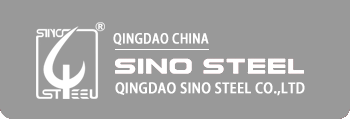“The Belt and Road” has become the second largest trading sector in the world
2019-05-08
“The Belt and Road” has become the second largest trading sector in the world
China news agency, Beijing, May 7 (Reporter Li Xiaoyu) A report jointly released by four Chinese and foreign institutions on the 7th shows that the “Belt and Road” has surpassed the North American Free Trade Zone and become the world's second largest trade after the EU. In the sector, the trade dividend is emerging.
“The Belt and Road” Trade and Investment Index Report prepared by China International Economic Exchange Center, University of International Business and Economics, Lufite Refinitiv (formerly Thomson Reuters Global Finance and Risk Business) and China Development Bank stated that “The Belt and Road” The construction has fully stimulated the advantages of different regions such as Southeast Asia, West Asia, Central Asia and Central and Eastern Europe, and the trade links between the economies along the line have become more and more close. Compared with the European Union and the North American Free Trade Area, the trade between the economies along the “Belt and Road” has increased significantly in global trade, reaching 13.4% in 2017, which is equivalent to 65% of the EU's internal trade.
The report believes that with the growing regional trade links in the “Belt and Road”, the trade circle with ASEAN as the core is gradually forming, which is consistent with the current global trade pattern. In terms of commodities, machinery and equipment is the largest trade volume between China and the economies along the Belt and Road, followed by commodities such as crude oil and fossil fuels.
In terms of investment, the report shows that countries and regions along the “Belt and Road” have become the most important foreign capital inflows in the world. In 2017, the proportion of global foreign capital inflows exceeded 30%, surpassing 23% in the North American Free Trade Zone and 21.2% in the EU. Level. Southeast Asia has become a major region for attracting foreign investment and foreign investment along the “Belt and Road”.
The report believes that the current development of trade along the “Belt and Road” economies is still constrained by factors such as weak infrastructure. In the future, trade liberalization and facilitation should be greatly promoted, trade costs and non-trade barriers should be further reduced, and railways, aviation, pipelines, etc. should be strengthened. Infrastructure, and the interconnection of soft infrastructure such as systems.
Previous Page:News analysis: European and American trade renewed disputes
Next Page:Tangshan 355 Strip Steel: small drop deal slows
CONTACT US
We're always working to expand the boundaries of what's possible. Stay up-to-date with the latest news, announcements and stories from SINO STEEL.
PRODUCT INQUIRY
Give us a few details about yourself and the demand requirements of products, we will reply you as soon as possible.






